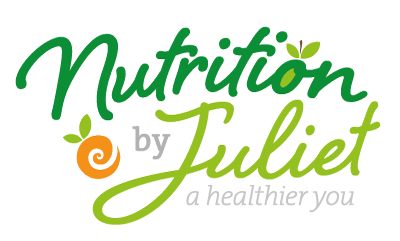
While it may be helpful to think of coeliac disease as an allergy to gluten since it reinforces the need to strictly avoid it, coeliac is actually an autoimmune disease. This means that antibodies are produced which attack certain tissues in the body. In coeliac disease, gluten triggers these antibodies to attack and damage the lining of the small intestine. Approximately 1 in every 100 people in the UK have been diagnosed with coeliac disease but many remain undiagnosed! However the antibodies can be easily detected by a blood test and coeliac confirmed by biopsy of the small intestine.
What is gluten?
Most people have heard of gluten these days as fortunately for us coeliacs many supermarkets and restaurants now offer plenty of gluten free products or dishes, but what exactly is gluten? Gluten is a protein found in wheat (and its variations like spelt and kamut), rye and barley – think bread, pasta, cake, biscuits/crackers, cereals, batter (eg on fried fish), pancakes and beer! Gluten is extremely widespread in the western diet and in processed foods. That’s why it is so important to read the label on all packaged food as gluten finds its way into potato crisps, brown sauce, and ready meals to name a few, and it is a key ingredient in soy sauce (but not in tamari, usually a wheat and gluten free variety of soy sauce – but always double check the label). I am so interested in gluten and its effects that I plan a whole blog post devoted to it – check back soon!
Oats are a special case as they do not contain the gluten protein, and although a small proportion of coeliacs also react to avenin, the protein in oats, most can eat oats safely. However, it is important that coeliacs eat oats which are certified gluten free as ‘normal’ oats are usually contaminated during processing – this goes not just for porridge, but for crackers, oatcakes, cereal bars and other foods containing oats.
What causes coeliac disease?
There is no simple answer to the question of what causes coeliac disease. There has to be a genetic predisposition and it often runs in families (such as was my experience where 3 generations of my family were diagnosed within the same 12 month period). However, just having the gene or a family history does not mean you will get coeliac disease, there are environmental triggers too. Obviously, eating gluten is a trigger, however coeliac disease can develop at any age meaning that, having happily consumed gluten for years, someone can go onto develop coeliac and no longer be able to eat wheat, rye or barley. Potential triggers for coeliac to develop might include stress (which is a subject for a whole other blog post!), imbalances in the gut bacteria or infections/viruses.
What are the symptoms of coeliac disease?
As you might expect from a disease of the gut, coeliac disease symptoms can include diarrhoea, constipation, bloating, excess wind, nausea and stomach pain. However, as with other autoimmune diseases, symptoms can manifest in distant parts of the body, for example some people with coeliac disease experience fatigue as their main or only symptom, others may have anxiety or depression, neurological problems, infertility, joint pain, mouth ulcers or skin rash (dermatitis herpetiformis). Yet others may have no outward symptoms (known as silent coeliac disease) – nevertheless there is physical damage to their gut lining and it is just as vital to avoid gluten.
The damage to the gut lining is progressive, if untreated it can lead to malabsorption of nutrients causing conditions like osteoporosis, anaemia or other complications including cancer. If you suspect coeliac disease, or have a family history of coeliac or other autoimmune disease, please ask your doctor for a blood test.
What if I have eliminated gluten but still don’t feel well?
First, double check, no triple check, that you have 100% eliminated gluten. Coeliacs must not eat food products which state on the label that they ‘may contain traces’ of gluten (or wheat/rye/barley/oats unless certified gluten free) or they have been produced in a factory which also handles gluten. Never hesitate to discuss with a restaurant what steps they take to avoid cross contamination of your gluten free dish with gluten – common things to check are whether chips are cooked in the same fryer with gluten containing food such as batter or whether your gluten free pasta will be cooked in the same water as normal pasta. Even tiny amounts of cross contamination such as using the same utensil which has handled gluten to then handle your gluten free food can damage your intestines if you have coeliac disease. This goes for your own kitchen too – keep gluten containing foods destined for family and friends away from your food, use different cooking utensils and pans for anything with gluten as traces can linger in cracks in a non-stick surface or in wooden spoons for example, and never share a toaster with someone eating normal bread!
Not only might it take some time to reverse the damage caused by coeliac disease, you might need support for potential nutritional deficiencies caused by malabsorption or you might need to consider overall gut health and support your friendly bacteria for example. Studies have also shown that coeliacs’ intestines have increased permeability (also known as ‘leaky gut’), which means that their gut lining has gaps which allow unwanted particles into the blood stream which may trigger further inflammation in the body.
If you would like support with optimising your health after a diagnosis of coeliac disease or with navigating the world of gluten free cooking, shopping and eating, contact me to arrange a free exploratory call.
References
Coeliac UK, www.coeliac.org.uk
Fasano, A., 2020. All disease begins in the (leaky) gut: Role of zonulin-mediated gut permeability in the pathogenesis of some chronic inflammatory diseases. F1000Research, 9, p.69. 10.12688/f1000research.20510.1.
König, J. et al., 2016. Human Intestinal Barrier Function in Health and Disease. Clinical and Translational Gastroenterology, 7(10), p.e196. 10.1038/ctg.2016.54.
Mu, Q. et al., 2017. Leaky gut as a danger signal for autoimmune diseases. Frontiers in Immunology, 8(MAY), p.598. 10.3389/fimmu.2017.00598.
Parzanese, I. et al., 2017. Celiac disease: From pathophysiology to treatment. World Journal of Gastrointestinal Pathophysiology, 8(2), p.38. 10.4291/wjgp.v8.i2.27.
